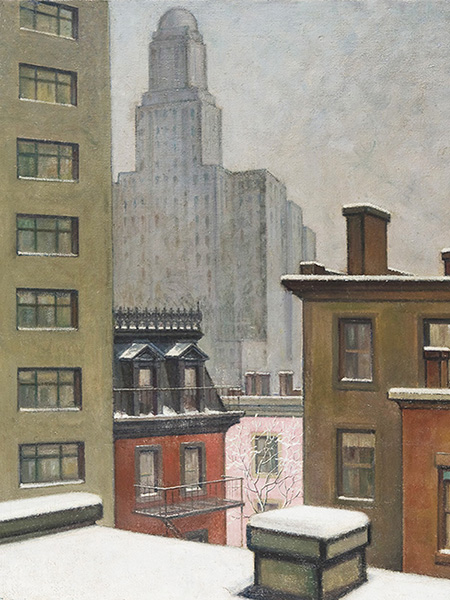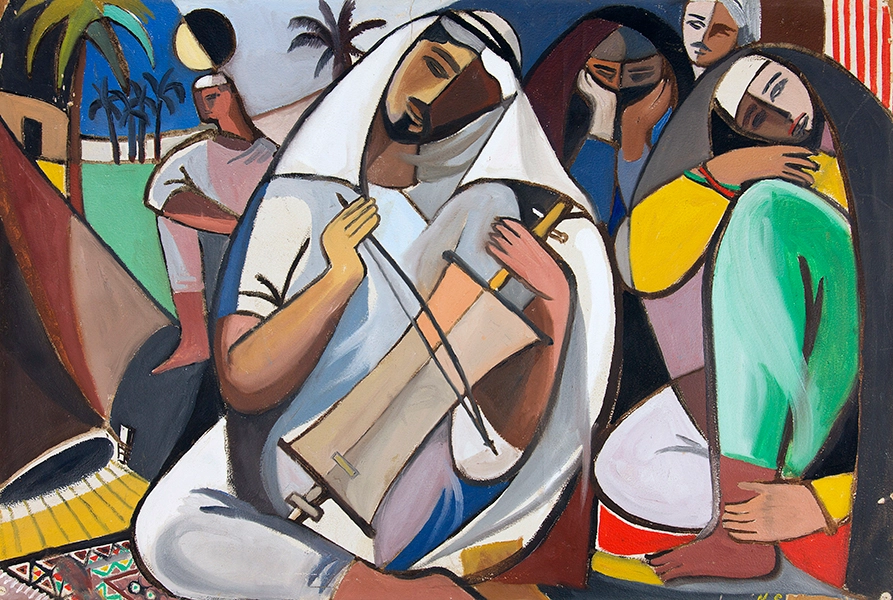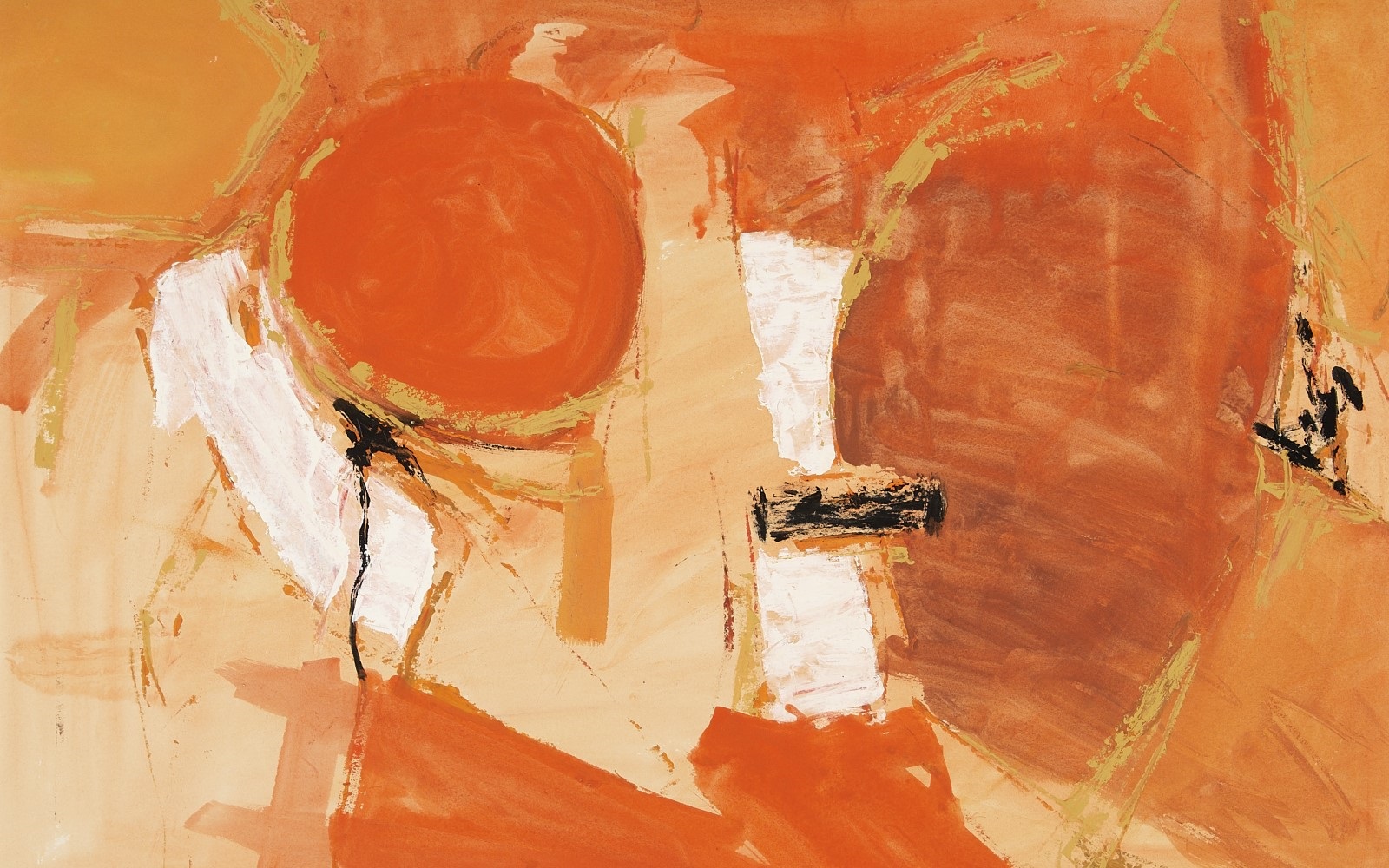

The formation of a collection
The Modern Collection was officially constituted in 1983 but includes works of art acquired by the Calouste Gulbenkian Foundation since 1958. The first annual report, published in 1957, refers to the creation of a specific fund for the acquisition of up to twelve works of art per year. The first acquisitions of works by 20th-century artists were made in January 1958, following the First Exhibition of Fine Arts held at the National Society of Fine Arts in Lisbon.


The inauguration of the Modern Art Centre (Centro de Arte Moderna – CAM) in July 1983 acted to consolidate the collection and make it more representative of the history of modern Portuguese art, while still featuring international highlights. Such international works were acquired as a result of the CGF’s actions in countries such as the United Kingdom and Iraq, or in France, where specific circumstances had brought Portuguese artists into close contact with the French artistic context.
Filtered by a historical conception of 20th-century modernist art, the Modern Collection was constituted with a view to integrating the largest possible number of artists whose work reflects the ideas, ideals and interests prevailing since the late 19th century to this day. In this sense, it did not seek to include artworks of a markedly academic or naturalistic character, or works or studies for works of public art carried out during the political regimes of the First Republic (1910-1926) and the Estado Novo(1933- 1974).
The most substantial international component of the MC is its set of British artworks, which provide a comprehensive cross-section of artistic creation in the United Kingdom between the late 1950s and the mid-1960s. Another such set includes works from the 1920s by French artists who developed ties with Portuguese artists, such as Robert and Sonia Delaunay, or the various artists who were close to the Portuguese painter Maria Helena Vieira da Silva and her husband, the painter Arpad Szénes, such as Bissière, Soulages, Torres Garcia, Zao-Wou-Ki and others. Other international artists represented include those from the KWY group (“ká wamos yndo”, who between 1958 and 1964 also published a magazine with the same title), such as Christo and Jan Voss, with works dating from 1960.
Other international works include those of Armenian-American painter Arshile Gorky, who is represented with a painting and two drawings, as well as a set of 31 Iraqi works acquired in the 1960s in the context of Calouste Gulbenkian Foundation’s intense philanthropic activities in Iraq. With the exception of the British art collection, whose most recent acquisition dates from 2016, the other international collections have not been added to since their initial acquisitions.


Characterisation
Often described as the most important collection of Portuguese modern art from the 20th century (from the first half of the 20th century), the MC boasts 1005 works from 92 artists (85 men and 7 women) from the period spanning 1900 and 1950. Though broadly comparable in terms of the numbers and names of artists represented, the second half of the century is more heavily represented in the collection, with a total of 4202 Portuguese works of art from this period.
Particular emphasis is given to the 1960s, when the Calouste Gulbenkian Foundation’s support of the visual arts allowed many Portuguese artists to travel and work outside of the country, support which intensified with efforts to stabilise the activity of the Calouste Gulbenkian Foundation both in Portugal and abroad. Between 1960 and 1969, 1163 works were acquired from 171 Portuguese artists (136 men and 35 women), which shows a significant increase in the representation of female artists in comparison to the first half of the 20th century.
The MC largely originated from the role played by the Calouste Gulbenkian Foundation in supporting the visual arts and, in a general way, Portuguese culture. It thus reflects the circumstances in which it has been brought together over time. In its initial phase, it was made up of artworks donated by the numerous recipients of grants supporting artistic training and the realisation of projects within Portugal and abroad. It was also formed through professional contact and friendships with artists and their families, for example with Paulo Ferreira, Lucie de Souza-Cardoso, Sonia Delaunay and Maria Helena Vieira da Silva in Paris, or Karlen Mooradian, a diaspora Armenian and nephew of Armenian-American painter, Arshile Gorky.


In addition to such works, the Calouste Gulbenkian Foundation awarded two grants for the purchase of British artworks – in 1959 and 1963 – acquired on the advice of the British Council Procurement Commission in London, which also purchased works for the British Council collection itself. While the 468 works of British art collected from 1963 to today by several different English purchasers and, more recently, through direct acquisitions have given rise to a certain heterogeneity, this set of artworks has been described as one of the most significant collections of post-World War II British art held outside the UK.
The Portuguese art held by the Modern Collection has come from various sources, including:
- Acquisitions, such as those arising in relation to point 9 of the 1st Calouste Gulbenkian Foundation Activity Plan presented in April 1957, referring to the provision of ‘Assistance for contemporary artists’ through the creation of a special fund for annual acquisitions of up to 12 works of visual art from public exhibitions. Over the years since, the Calouste Gulbenkian Foundation’s has often acquired works of art directly from artists or their representatives in the context of its exhibitions;
- A substantial part of the Portuguese Painting and Drawing collections were purchased from the banker Jorge de Brito, who also donated a set of works;
- Works have also been donated by artists receiving Calouste Gulbenkian Foundation grants and by other artists and their representatives, such as the parents of António Areal, the widow of Fernando Calhau, the widow of Hein Semke, and the widow and heirs of the widow of Bernardo Marques;
- Works have been bequeathed by artists such as Maria Helena Vieira da Silva and Bernardo Marques.

